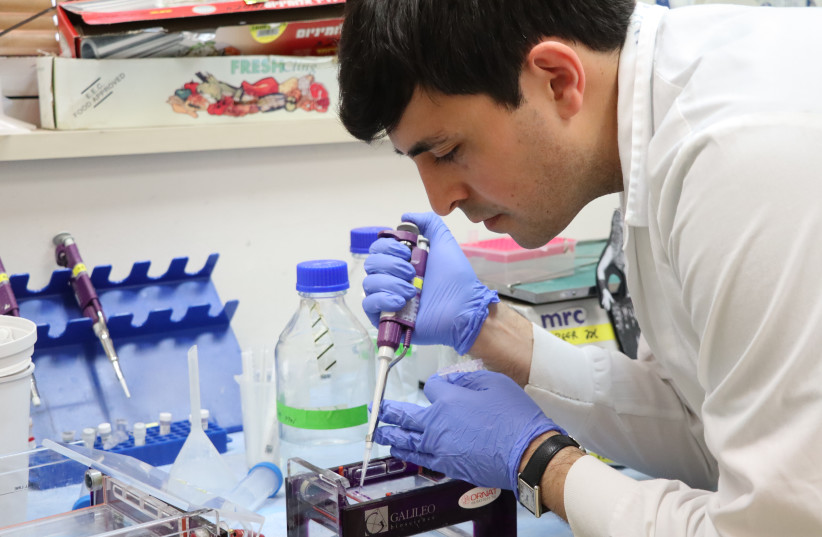It might be a good idea to start watching your steps – at least how long they are. The length between your paces can provide evidence of early signs of a variety of neurological diseases and monitor their exacerbation. Step length is generally reduced as people get older and also among people with neurological disorders.
Researchers at Tel Aviv University (TAU) and Tel Aviv Sourasky Medical Center (TASMC) led a multidisciplinary, international study in which an innovative model based on machine learning was developed to accurately estimate step length.
Four times more accurate than conventional methods
Their algorithm converts data from a small, waterproof, lightweight, wearable sensor taped to the lower back that provides an accurate estimate of the length of each step. It is about four times more accurate than conventional biomechanical models.
Previous studies have investigated wearable devices based on sensors called inertial measurement units (IMUs) to assess step length, but these experiments were carried out using devices that were not comfortable to wear, sometimes necessitating the use of several sensors simultaneously. They were also done only with healthy people who didn’t have difficulty walking, and were based on a small sample size that didn’t allow generalization.
“Step length is a sensitive and non-invasive measure of a wide range of problems associated with aging, cognitive decline, many neurological diseases, multiple sclerosis, and Parkinson’s and Alzheimer’s disease, as well as acute cardiovascular disease and stroke. Our model makes possible continuous monitoring of this key aspect of a patient’s condition,” the researchers wrote in their article, just published in the journal Digital Medicine under the title “A wearable sensor and machine learning estimate step length in older adults and patients with neurological disorders.” An accurate and diverse database consisting of 83,569 steps was collected.
The new model can be integrated into a wearable device that is attached with skin tape to the lower back and enables continuous monitoring of steps in a patient’s everyday life. The conventional measuring devices that exist today are stationary and cumbersome and are only found in specialized clinics and laboratories. The new model enables accurate measurement in a patient’s natural environment throughout the day, using a wearable sensor, the researchers said.
The study was led by Assaf Zadka, a graduate student at TAU’s biomedical engineering department; Prof. Jeffrey Hausdorff from the physical therapy department at the Faculty of Medical and Health Sciences and TAU’s Sagol School of Neuroscience and TASMC’s neurology department; and Prof. Neta Rabin from the industrial engineering department at TAU’s Fleischman Faculty of Engineering. Also participating in the study were Eran Gazit from TASMC and Prof. Anat Mirelman from TAU and TASMC, as well as researchers from Belgium, England, Italy, Holland, and the US.
Hausdorff, a neurologist specializing in the fields of walking, aging, and falling, explained that “step length is a very sensitive and non-invasive measure for evaluating a wide variety of conditions and diseases, including aging, deterioration as a result of neurological and neurodegenerative diseases and cognitive decline.
“Today, it is common to measure step length using devices based on cameras and measuring devices like force-sensitive gait mats that are found only in specialized labs and clinics,” he said. “While these tests are accurate, they provide only a snapshot view of a person’s walking that probably doesn’t fully reflect real-world, actual functioning. Walking on a daily basis may be influenced by a patient’s level of fatigue, mood, and medications. Continuous, 24/7 monitoring like that made possible with this new model of step length, can capture this real-world walking behavior.”
Translating steps into disease detection
Machine-learning expert Rabin added: “We wanted to solve the problem by harnessing IMU systems – light and relatively cheap sensors that are currently installed in every phone and smart watch, and measure parameters associated with walking. The goal was to develop an algorithm that could translate the IMU data into an accurate assessment of step length and be integrated into a wearable and comfortable device.”
The Team succeeded by using IMU sensor-based gait and step-length data, measured conventionally in a previous study on 472 people with Parkinson’s, mild cognitive impairment, or multiple sclerosis, along with healthy elderly and younger people. They used the data to train a number of computer models that translated the IMU data into an estimate of step length. To test the models’ preciseness, they determined to what extent the various models could correctly analyze new data that had not been used in the training process.
“We found that the model called XGBoost is the most accurate and is 3.5 times more accurate than the most advanced biomechanical model currently used to estimate step length,” Zadka said.
“For a single step, the average error of our model was six centimeters compared to 21 centimeters predicted by the conventional model. When we evaluated an average of 10 steps, we arrived at an error of less than five cm – a threshold known in the professional literature as ‘the minimum difference that has clinical importance’ – that allows identifying a significant improvement or decrease in the subject’s condition,” he said.
“Our model is powerful and reliable, and can be used to analyze sensor data from patients, some with walking difficulties, who were not included in the original training set.”
Hausdorff concluded that “in our research, we collaborated with researchers in diverse fields around the world, and the multi-disciplinary effort led to promising results. We developed a machine-learning model that can be integrated with a wearable and easy-to-use sensor and provides an accurate estimate of the patient’s step length on a daily basis.
“The data collected in this way enables continuous, remote, and long-term monitoring of a patient’s condition and can also be used in clinical trials to examine the effectiveness of medications,” he said. “Based on our encouraging results, we are investigating whether it’s possible to develop similar models based on data from sensors in smart watches, which would further improve the comfort of the subject.”

